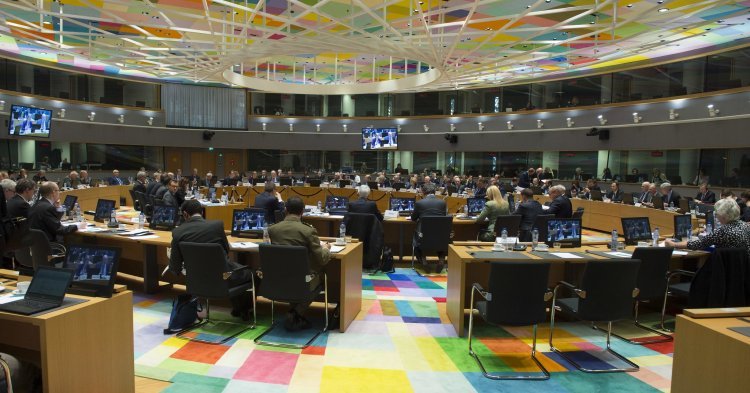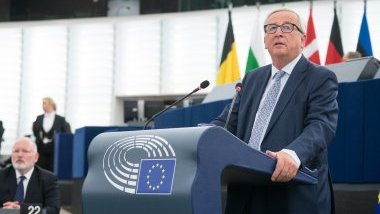The starting point of the PESCO projects is indeed national initiative, therefore basing it on the willingness of the Member States to participate in different ongoing projects. Even though PESCOs depend on national initiatives, they are demonstrating to be an excellent practice among the governments of the Old Continent, as indeed the 34 projects launched between March and November show. We have projects like EUROMALE (European Medium Altitude Long Endurance Drone), guided by Estonia, or Greek-Cypriot joint actions, launch systems of missiles, reconstructions of spatial defence and the Galileo project. France, Italy, Germany are often at the centre of these projects, but other member states are also involved.
Going beyond each development plan, something of interest for those who work in this field is the existence of a serious commitment of member states to collaborate in a sensitive area, the area of defence. This is remarkable especially now that NATO is weaker because of the Trump presidency in the USA, and because of an increased feeling of insecurity within and beyond European borders. Ukraine, Syria, Libya and Yemen are not far away and the consequences can be perceived particularly at the largest borders of the Union. On the one hand, at a political level, nationalisms and xenophobia have been the answers to this insecurity, European institutions have been accused and governments refused their responsibility at different levels. On the other hand, Member States started looking for new answers in the international and transnational collaboration in military defence.
This phenomenon is not something completely new. Projects concerning the Eurofighter, the Tiger helicopter and the FREMM demonstrate how national commitments are more and more projected towards an international vision. These are technical and economic necessities that also bear a political message. Single nations cannot complete some projects alone, but they often search for the best support provided by the Union. Even though PESCOs are a bottom-up approach, they demonstrate that the Union is providing economic and organisational support to Member States in order to let them participate in joint actions. These joint actions aim at increasing the exchange of expertise, enhancing knowledge and capacities of Member States. A better technical integration can consequently push for an increased integration of military leadership. Sharing technologies and projects means sharing and aligning strategies.
PESCOs are not a cure for all wickedness. These projects are still based on the willingness of the Member States in participating with the means and methods they prefer. PESCOs remain a tool for the Member States, an economic and operational support (thanks to the Coordinated Annual Review of Defence and the European Defence Funds) to increase the capacities of the individual countries. It is important to consider that some initiatives in the defence area remain strictly under the jurisdiction of Member States. An example is the case of the fifth generation fighters with the Tempest project under the British lead and the other still unnamed project under Franco-German lead.
At the same time, we cannot forget the important role that the United States and NATO partners are still playing in the research and development of military capacities of the Member States. It is sufficient to think about the debated purchase of the F-35, in which Italian technology was involved. However, the use of these fighters in the Italian Navy needed an adaptation of the airstrip of the Cavour Ship, and this still ongoing procedure is happening in construction sites in Taranto under the supervision of American technicians.
However, these tools start from the initiative taken at national level and for this reason, they are influenced by national political circumstances. PESCOs could be something more important if they became a top-down tool in the hands of the European Parliament. This could allow the top-level governance to manage the new collaborations, to finance and define the projects to be launched. The aim would be covering and unifying the gaps in military defence field among Member States, supporting more inclusive collaborations from the technical and organisational point of view.
The use of these tools could become a traditional good practice to be extended in other fields besides defence. These fields might be less strategic even if they are necessary, but maybe could be more visible to the eyes of European citizens.
PESCOs could become a starting point to think about a European military defence, not based upon a network of independent nations, but as a centralised network with the Union at the centre of a multilevel military governance. There is no doubt that the transition from a national military force to a single European military force needs to be gradual. However, as PESCOs are demonstrating, it is a necessary pathway in a world of more and more complex challenges.
Military forces already had to cope with a completely different geopolitical and operational panorama. An example is their involvement in peace missions, surveillance of the seas or internal operations (e.g. Safe Roads in Italy). Asymmetric wars and challenges in new scenarios, a shift towards a non-national governance could be a necessary step to align the operations and the tools of the European military forces in the face of these challenges.
From an even more pragmatic viewpoint, a constant investment in the cooperation in military defence could make the relative industries intensify their already fruitful relationships at European level. In this way, they would hinder both the rich foreign companies and the extra-European investments that, as the Piaggio case demonstrated, do not always provide the expected outcomes.




Follow the comments: |
|
